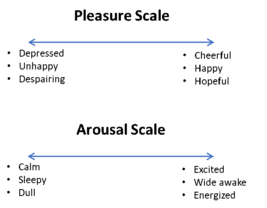How Do We Get the Damn Envelope Opened?
It is as true as it is unhelpful to note that the outer envelope (OE) must be opened before someone can pay attention to the insides and send back the reply form or not (almost always, not…).
There is certainly a lot of envelope testing done, no disputing that. But, is there any theory guiding how we should think about the envelope and the job or jobs it needs to do?
Theory makes testing more efficient, gives it aim and purpose and can shed light on the only question that should matter – why something won or lost.
An academic study published in NonProfit Management & Leadership sheds some light on all of this.
This is called a path model. Arrows show direction of influence. The outcome explained here is “intention to open the envelope”, which is highly correlated with actually opening. Our job therefore, is creating intent as it precedes the opening behavior.
The numeric values are coefficients – bigger means bigger influence or role in creating intention to open.

A few key points:
- The envelope plays a much bigger role in creating intent for acquisition (vs. renewal) audiences.
- Spend less time and money on house file OE
- Cause involvement (consider this as connection to mission) impacts Attention but this is more of a list selection task since Cause Involvement increases the chance that I pay attention to the envelope but the characteristics of the envelope aren’t influencing that path (from Cause to Attention to Intention).
- Pleasure matters more than Arousal and this is especially true for house file donors; and there is a right way and wrong way to do each. (Not sure we at Agitator or DonorVoice ever envisioned writing a fundraising blog with that sentence, much less one dealing with envelopes…
 )
)
It is this last finding that provides new, useful and prescriptive guidance.
Pleasure and Arousal are bipolar scales in this study.
We now know that Pleasure is more important than Arousal but you need both, especially for Acquisition.
The other important part is that callouts or imagery on the OE that create sadness or levels of despair aren’t driving intention to open, they are suppressing it.
The creative aim needs to be happy and hopeful.
An OE that creates a happy, hopeful reaction plus creating excitement is really doing the job we hired it to do.
Having typed all that I can almost hear the thundering retort of the control–a plain white, OE with zero branding on it because it creates “intrigue”. Maybe. Three counterpoints to consider:
- Does that plain white envelope really create intrigue or does it trigger fear and anxiety of missing a bill or announcement of a government audit or whatever the hell else negative we think might show up in our mailbox with zero markings on it.
- What is the lifetime value of the donors coming in on the plain, white, unbranded OE, control? Chances are that’s unknown because any test that didn’t win the immediate ‘battle’ of the acquisition metrics was never given a chance to prove it might be the better medium and long-term play.
- With a bit more theory guiding the next test against the plain, white, unbranded OE, I’d bet on the test. That plain white, unbranded OE likely represents “local optimization”, not global; the former being the best of sub-optimum alternatives.
Kevin



Very interesting. It’s long been my view that unless you can come up with irresistible outer envelope copy, don’t use it although I agree that acquisition in particular needs to call to the potential donor. The idea that hope and positive messages – and not messages of need – are more effective is useful. I wonder if this always holds true though, for example in the case of a terrible flood or famine, when the heartbreaking photos beg for action.
Jill, there is plenty of possibility to have copy and/or images that help increase attention and intention in positive ways. But, certainly plenty of possibility to screw it up too. We always fall back on theory to guide the specific, tactical decisions (for this or anything else) and increase the likelihood of choosing well (among an almost infinite # of possibilities) and as or more importantly, having a longer term testing plan to get it “right” over time with continuous learning and improvement guided by a systematic, theory driven approach.
As for disasters, that image “begging for action” could just as easily create a sense of hopelessness.
Have you read Siegfried Voegele’s “Handbook of Direct Mail”?
Chris, yes, have read it (or skimmed extensively) as well as your posts on it. I’ve found his work to be a bit “thin” but a decent starting point. For example, there is a lot of nuance in anticipated emotion. In fact, some recent work parses it into anticipatory emotion (what I feel in the moment when looking at the OE) and anticipated (what i expect to feel if I open it ) that separately influence intention.